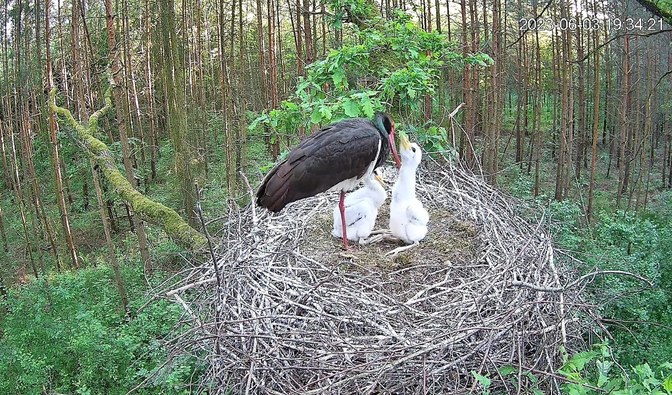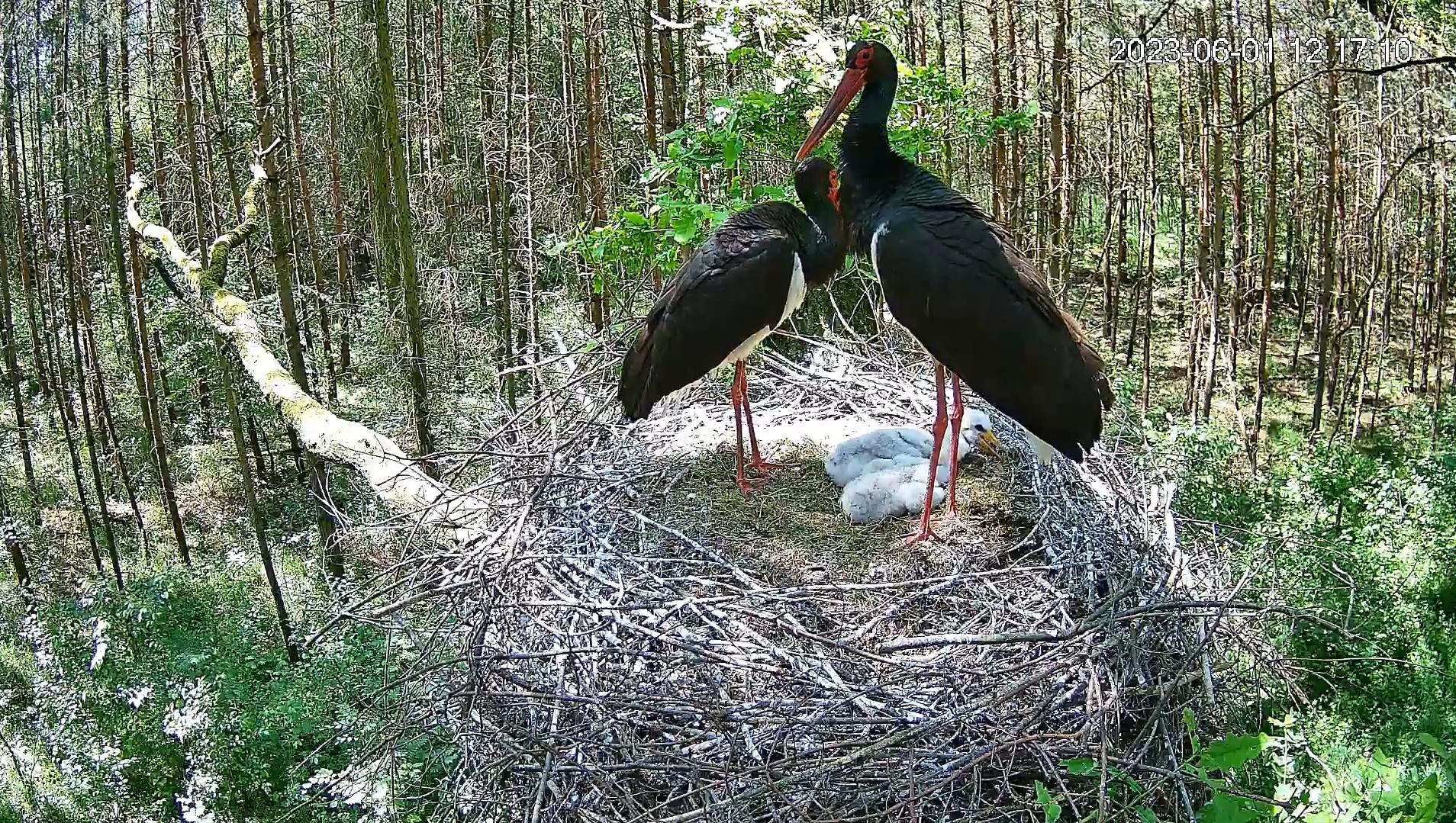Discover the fascinating world of black storks (Ciconia nigra), rare inhabitants of Polish forests, through the educational project Black Storks Online. In collaboration with the Regional Directorate of State Forests in Łódź and the Faculty of Biology and Environmental Protection at the University of Łódź, this pioneering initiative aims to unravel the mysteries surrounding these secretive birds. Led by Professor Piotr Zieliński, the project offers a unique online broadcast from a black stork nest, providing valuable scientific insights.
A Challenging Season for the Black Storks’ Nest
The black stork nest located in the Lodz region faces a critical and significant moment. Two young storks are about to be left alone in the nest, signifying a crucial stage in their development.
Tracing the Origins
To set the context, let’s take a brief journey back in time. Historically, little was known about the elusive lifestyle of black storks. However, since 2016, the Black Storks Online project has been working diligently to uncover the secrets of these avian species. Notably, it is one of the few initiatives of its kind in Europe, brought to life by the collaboration between the Regional Directorate of State Forests in Łódź and the University of Łódź. Professor Piotr Zieliński, an esteemed faculty member, serves as the project’s scientific consultant.
Naming the Nest’s Inhabitants
In the midst of the pandemic, the adult black storks have been given names by dedicated nest watchers. Inspired by Gabriel García Márquez’s novel ‘Love in the Time of Cholera,’ they are affectionately called Fermina and Florentino. Each year, observers contribute their suggestions for naming the newly hatched chicks.
Insights from the 2023 Season
During the current breeding season, the black stork nest witnessed the hatching of four chicks in May 2023. Unfortunately, the first chick fell victim to a tawny owl attack indirectly targeting Fermina. Just five days later, a hawk seized the second chick, despite the presence of a vigilant adult stork. Out of the initial brood, only two young storks remain.
At the time of writing, the larger chick is 22 days old, while the smaller one is 20 days old. Typically, chicks at this age would be left unattended. However, Fermina and Florentino are acutely aware of the looming threat of the hawk, causing them to delay leaving the chicks. They can afford to do so with only two chicks to feed. Nonetheless, the parents will soon need to take the risk, as the chicks’ nutritional demands grow.




Tracking the Storks’ Journey
Meanwhile, the young storks that fledged from the nest online in 2022 regularly share their positions. Figo, who spent the winter approximately 4,990 km away from the nest in southeastern Chad and the northeastern Central African Republic, has been traversing Turkey since leaving Africa on April 18, 2023. Fago, on the other hand, wintered about 4,640 km away in southeastern Sudan and northwestern Ethiopia. Departing Africa on April 19, 2023, she flew over the Bosphorus Strait on April 25, 2023. Figo and Fago will be searching for breeding sites in Poland in the spring and summer of 2024, with the hope of commencing breeding in 2025.
Insights from the Black Storks Online Project
The Black Storks Online project has yielded significant knowledge about the black stork’s behaviour and biology. Initially, little was known about their wintering locations, but now it is established that European black storks generally spend the winter in Africa, south of the Sahara. Thanks to GPS locators, it has been observed that most Polish black storks migrate to eastern and central Africa via the Middle East, while some opt for the western route via the Strait of Gibraltar.
The project’s online observations have also shed light on the process of forming nesting pairs, the roles of male and female storks in egg-laying and chick-rearing, nest fidelity, chick growth, and fledging. Compared to its white stork relative, the black stork is less inclined to interact with humans and does not engage in elaborate pre-flight displays.
The Remarkable Conservation Efforts
The biological understanding gained from this project plays a vital role in the conservation and population recovery of black storks. By creating favourable nesting conditions, the collaborative efforts of foresters, researchers, and conservationists have enabled the black stork population in Poland to thrive, with an estimated 1,400-1,600 breeding pairs.
Beyond the Online Realm
Since 2020, the Regional Directorate of State Forests in Łódź has extended its support to the black storks residing in the City Zoological Garden in Łódź. In addition, a black stork mural has been created at 3 Orla Street in Łódź, a joint initiative by the Regional Directorate of State Forests, the University of Łódź, and Bank Ochrony Środowiska S.A. This mural aims to raise awareness about the black stork and its significance, fostering education and curiosity among Łódź residents and tourists. It symbolizes the fruitful collaboration between the scientific community and the State Forests, underscoring their contributions to the protection and research of the black stork in Poland.
Through the ongoing Black Storks Online project, the enigmatic world of black storks is gradually being unveiled. From the intricacies of their breeding behaviour to their impressive migratory journeys, these rare Polish forest inhabitants continue to captivate scientists and nature enthusiasts alike. Stay updated on the project’s latest developments and access captivating nest observations, reports, and archive videos on YouTube or follow the RDSF Łódź Facebook page. Together, we can contribute to the conservation and appreciation of these magnificent birds.

